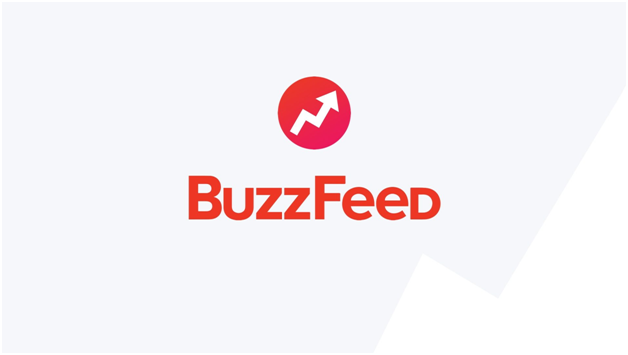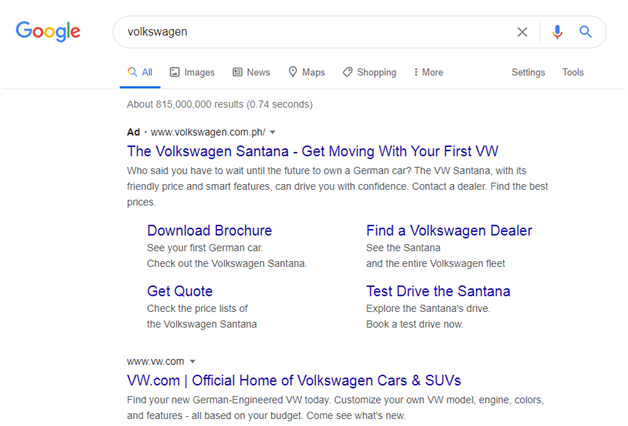Ads in disguise? This digital media platform helps brands do just that! [Every Thursday: FYO!]

Create. Adapt. Extend.
Connect with a global audience of over 520 million.
Publish content that your target market will read, view, and act on…
…all with the help of this digital media platform.

BuzzFeed, Inc. is a New York-based news and entertainment company with a focus on digital media.
Its network includes:
- BuzzFeed Originals that contains all its articles, quizzes, and videos.
- BuzzFeed Media Brands for its portfolios on its lifestyle brands like Nifty, Goodful, As/Is, and Tasty.
- BuzzFeed Studios, which creates the company’s original contents across broadcast, cable, film, and digital platforms.
- BuzzFeed News that covers its news reportage and investigative journalism.
- BuzzFeed Commerce, which establishes and improves products, experiences, licensing, and other partnerships.
How does BuzzFeed play its role in bridging the gap between brands and its target market?
Through Native Advertising!
In 2018, BuzzFeed started working with its clients to develop products for its audience, particularly young people and millennials.
These clients would pay BuzzFeed to design the product advertisement and market it as a native ad.
Native Advertising is the use of paid ads that follow the look, style, and function of the social media platform in which they appear.
Contrary to display ads or banner ads, native ads do not really look like an ad. They appear as if they are part of the editorial flow of a page.
For BuzzFeed’s, these ads take the form of posts, videos, quizzes, and other types of content that are found on their website.
Wondering how this type of advertising can increase a brand’s or business’ online visibility?
According to Outbrain.com, one of the world’s leading web advertising platforms, native ads are non-disruptive, as it “exposes the reader to the advertising content without sticking out like a sore thumb.”
Here are a few more reasons why you should try native advertising to reach your target market:
- People see it. Consumers look at native ads 53% more than the standard display ads or banner ads. Native ads have also registered an 18% higher lift in consumers’ purchase intent.
- Native ads fight ad fatigue. When people get bored from seeing ads, they simply stop paying attention—they sometimes even place ad blockers on sites they visit! With native ads, brand exposures are cloaked in editorial content, so people won’t tire out. As long as your ad content is interesting and useful, people will keep engaging with it!
- Native advertising fools nobody! In a Stanford University study, researchers discovered that consumers are well aware that they are consuming a form of advertisement, but it still has an impact on their purchasing behavior.
Since native ads seem like regular content, here’s how you’ll be able to spot one:
- “In Feed” Ads
- Search and Promoted Listings
These are ads that usually appear on your social media news feeds.
You’ll spot them as the ones with “Sponsored” tags on the upper left corner of their posts.

These are the ads you see at the top of your Google search results.
- Content Recommendations
These ads take the form of recommended articles below the article you just read.
Here are two examples of brands that partnered with BuzzFeed through native advertising:
Volkswagen
American Express Canada
This card company partnered with BuzzFeed to promote its new American Express Cobalt credit card to young professionals in Canada.
The credit card was specifically designed by AMEX Canada to cater to the social lifestyle of a generation whose spending habits reveal a passion for food, travel, and entertainment.
Card holders will be rewarded for every purchase they make. They can earn as much as five times the points on eligible eats and drinks, while the card’s two-time accelerator covers all things on eligible travel and transit.
In order to spread awareness and convince the target market to avail the new card, BuzzFeed highlighted the features of the card by dining at eligible restaurants and using it for eligible travel.
After the campaign, American Express Canada recorded an eCPV (effective Cost Per Visit) of $0.06, which is 41% more efficient than their initial target.
Its total engagements also reached 8.8 million impressions (in Canada alone), over three million video views, more than 21,000 comments and reactions, and over 7000 shares.

To target financially confident modern sedan drivers, the German automotive company partnered with BuzzFeed to promote the Virtus sedan.
The goal was to put emphasis on the experience and adventure the new car model could offer.
In order to do this, the BuzzFeed team created one “A Day in the Life” post while driving the newly released Volkswagen Virtus, highlighting the best places to go to and the best people to meet in Sao Paulo, Brazil.
Four “Bring Me” editorial videos and three “Bring Me” co-branded videos were also created.
The videos were posted on BuzzFeed’s website as native ads.
After the campaign, Volkswagen recorded an 89% in its Innovation Attribute Rating, which determines the rate of an adoption of an idea. This is 9% higher than their estimated 80%.
The native ads also garnered 34.2 million total impressions, 11.4 million total views, and over 214,000 total engagements.
The BuzzFeed Impact: By tapping on BuzzFeed, these brands were able to…
REACH their target market and raise awareness of the products and services they offer.
Maintain ACTIVE VIEWERSHIP through the BuzzFeed community.
Create REAL INTENT, driving real results for their business.
Reaching your target market doesn’t always have to be doing what the other marketers do.
You don’t want people to also squint their eyes (or even put ad blockers) upon seeing your ad, do you?
Be creative! Do something extraordinary, like disguising your ad as regular content that people would be interested in.
Use this form of advertising for your business and see the results it will yield!
About The Dynamic Marketing Communiqué’s
“Thursdays: FYO! Find You Optimization”
Why should you stop thinking SEO and start thinking FYO?
We’re not saying that you should abandon Search Engine Optimization (SEO).
Don’t get us wrong, of course, we know this is something very important, especially in today’s digital marketing age.
The internet landscape is vast, and a world of its own. You really need to distinguish yourself and make your brand/company/website known and easily searchable.
Better yet, get to the top of page one for Top Results on Google or any other search engine.
However, what is the purpose of SEO? It’s that customers Find You!
That’s what matters. So, while SEO is one factor of FYO… it really is only one, and we ought not to abandon all the myriad of ways digitally and offline for improving your FYO.
How can we look at this from a different and better perspective?
Let’s say you have it in the bag! You and your team are experts in SEO. Awesome. But did you ever wonder what else you could do to push it further and give your SEO skills a boost?
FYO! Find You Optimization!
You need your target audience to FIND YOU—your brand, product, service, or offer. This is SEO plus other tools that increase visibility online (and offline).
Every Thursday, we publish content on how you can get your target market to find you, beyond the typical “type and search.” There are other things you can do along with your SEO to give your online advertising process a boost.
Try considering other tactics beyond it—WOMO (Word Of Mouth Optimization), RO (Referral Optimization), and “All-Other-Means-Of-Getting-Your-Target-Market-To-Find-You” Optimization (AOMOGYTMTFY, if you’d like a long acronym).
Part of a great marketing strategy is knowing how to adapt new methods and make use of different types of marketing and promotion that best fit your business goals and which give you the results you want.
Hope you’ve found this week’s insights interesting and helpful.
Stay tuned for next Thursday’s FYO!
Cheers,
Kyle Yu
Head of Marketing
Valens Dynamic Marketing Capabilities
Powered by Valens Research
www.valens-research.com
This content is used with permission from The I Institute and The Business Builder Daily.
View All






